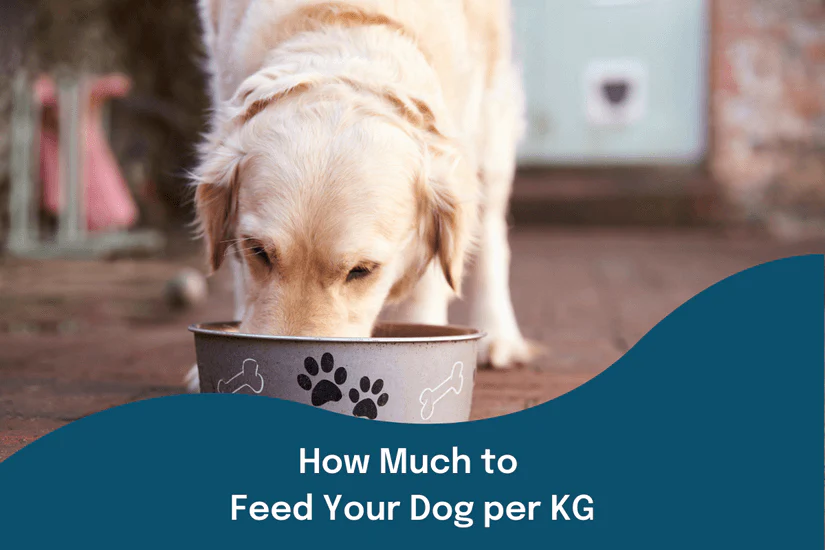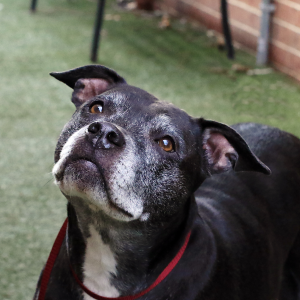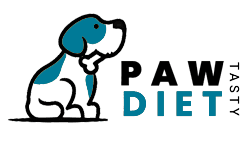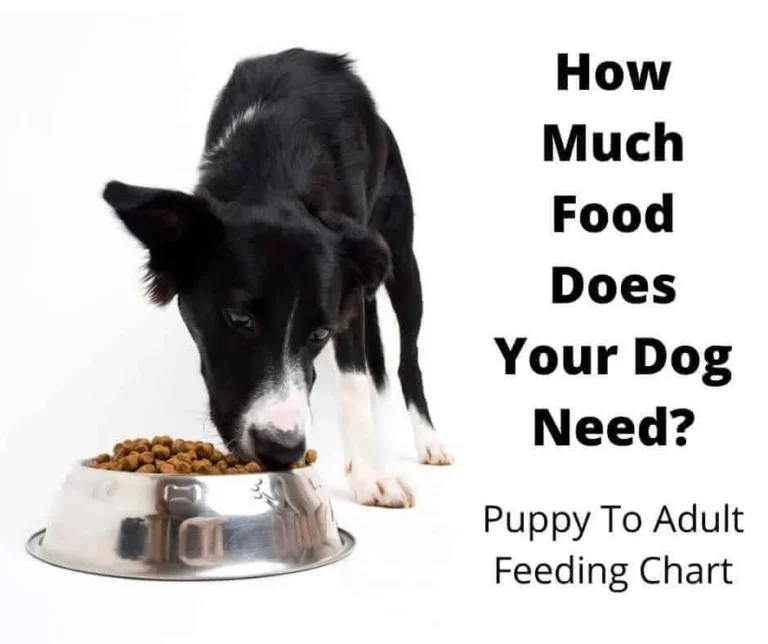If you’re a dog owner, one of the most important responsibilities is ensuring your furry friend is getting the right amount of food. Being at the helm of a dog owner, you ought to think about how much to feed a dog by weight, just like humans, dogs have different nutritional needs depending on their weight. And with so many options available in the market, it can be overwhelming to figure out how much to feed your dog by weight. But don’t worry, we’ve got you covered! In this blog post, we’ll discuss everything you need to know about feeding your dog based on their weight. So let’s dig in, shall we?
1. Understanding Your Dog’s Nutritional Needs
Before we dive deep into the details of how much food your dog needs based on their weight, it’s important to understand their nutritional needs. Just like humans, dogs require a balanced diet consisting of proteins, carbohydrates, fats, vitamins, and minerals. The amount of each nutrient needed varies depending on factors such as age, breed, activity level, and overall health.
Factors Affecting Dog’s Nutritional Needs
As mentioned earlier, several factors can affect your dog’s nutritional needs. Let’s take a closer look at each one of them.
Age
Puppies and adult dogs have different dietary requirements due to their growth and development stages. Puppies require more calories, protein, and fat to support their rapid growth, while senior dogs may need a lower-calorie diet to prevent obesity and age-related health issues.
Breed
Different dog breeds have different metabolic rates, which can affect how much food they need. For instance, smaller breeds tend to have a higher metabolism and may require more calories compared to larger breeds.

Activity Level
Active dogs such as working or sporting breeds will require more calories to fuel their energy needs, while less active dogs like couch potatoes may need a lower-calorie diet to maintain a healthy weight.
Health Conditions
Certain health conditions like diabetes, allergies, or kidney disease may require your dog to be on a special diet. In these cases, it’s best to consult with your veterinarian for specific feeding guidelines.
2. Calculating the Right Amount of Food Based on Your Dog’s Weight: how much to feed a dog by weight
Now that you have a better understanding of your dog’s nutritional needs, let’s get into the specifics of how much to feed based on their weight. The general rule of thumb is to feed your dog 2-3% of their body weight in food per day. This means if your dog weighs 10kg, they would require about 200-300 grams of food each day.
Measuring Your Dog’s Food:
Measuring your dog’s food is essential to ensure you’re not over or underfeeding them. Most commercial pet foods come with a feeding guide on the packaging, which can give you an idea of how much to feed based on your dog’s weight. However, keep in mind that these are just rough guidelines and may need to be adjusted depending on your dog’s weight.
3. dog’s individual needs:
Using a kitchen scale to measure out the exact grams can help in ensuring accuracy.
Below is a table highlighting the general food needs for puppies and adult dogs based on their weight. Remember, these are starting points and should be adjusted based on the factors previously discussed.
| Weight of Dog (kg) | Puppies (grams per day) | Adult Dogs (grams per day) |
| 5 | 150-200 | 100-150 |
| 10 | 300-400 | 200-300 |
| 20 | 600-800 | 400-600 |
| 30 | 900-1200 | 600-900 |
| 40 | 1200-1600 | 800-1200 |
| 50+ | 1600-2000 | 1000-1500 |
Please note that these quantities represent a general guideline on how much to feed a dog by weight and must be customized to your dog’s specific nutritional requirements, health status, and lifestyle. Always consult with a veterinarian when making significant changes to your dog’s diet to ensure their health and well-being.

Similar posts
Signs of Overfeeding or Underfeeding Your Dog
It’s essential to keep an eye on your dog’s body condition and adjust their food intake accordingly. Here are some signs that may indicate you’re over or underfeeding your dog.
Signs of Overfeeding Your Dog
- Weight Gain: One of the most evident signs of overfeeding is weight gain. If your dog is gaining excess weight or appears overweight, it may be time to reassess their food intake.
- Less Energy: Dogs that are overfed may become lethargic and show less interest in physical activities they once enjoyed.
- Difficulty Breathing: Excess weight can put pressure on the respiratory system, making it difficult for your dog to breathe, especially during physical exertion.
- Digestive Issues: Overfeeding can lead to digestive issues such as diarrhoea or constipation as the digestive system struggles to process the excess food.
- Joint Problems: Carrying extra weight increases the strain on a dog’s joints, which can lead to discomfort and issues like arthritis, especially in larger breeds.
- Changes in Appetite: Overfed dogs may show a decreased interest in food over time, as constant overeating can affect their appetite regulation.
Signs of Underfeeding Your Dog
- Visible Ribs and Bones: If your dog’s ribs, spine, and bones are easily visible under their fur, this is a primary indication that they may be underfed and lacking in necessary nutrients.
- Lack of Energy: An underfed dog often shows a significant decrease in energy and may be less playful or lethargic throughout the day, as they’re not receiving enough calories to maintain normal activities.
- Dry, Dull Coat: Nutrition plays a crucial role in the health of a dog’s coat. An undernourished dog may have a coat that appears dry, dull, or brittle due to the lack of essential fatty acids in their diet.
- Weight Loss: Continuous weight loss or the inability to gain weight, despite eating, can suggest that your dog is not getting sufficient food or that their diet lacks necessary nutrients.
- Weakened Immune System: Dogs that aren’t receiving enough food may have a weakened immune system, which makes them more susceptible to infections and diseases.
- Behavioural Changes: Underfeeding can lead to changes in behaviour, such as increased aggression or irritability, as well as obsessive behaviours like excessive licking or chewing due to hunger or nutrient deficiencies.
- Stunted Growth: In puppies, underfeeding can result in stunted growth or developmental issues, as they require adequate nutrition for their bodies to grow and develop properly.
Monitoring your dog’s food intake and ensuring they’re receiving a balanced diet suited to their specific needs is crucial for their overall health and well-being. If you notice any of the signs of underfeeding, consult your veterinarian for advice on adjusting your dog’s diet to meet their nutritional needs.

Conclusion
In conclusion, knowing how much to feed your dog by weight is crucial for their overall health and well-being. As a responsible pet owner, it’s up to you to ensure your furry friend is getting the right amount of nutrition for their individual needs. By understanding your dog’s nutritional requirements and following the guidelines provided in this article, you can ensure they stay healthy and happy for years to come. Remember, always consult with a veterinarian if you have any concerns or need help with creating a customized diet plan for your dog. Here’s to many happy and healthy meals with your beloved canine
Concerns and FAQs.
Q1. How often should I adjust my dog’s diet?
A1. Monitor your dog’s weight and overall health regularly, ideally every 3-6 months, or whenever you notice significant changes in their weight, activity level, or health status. Adjust their diet accordingly and consult with your veterinarian for personalized advice.
Q2. Can I feed human food to my dog?
A2. While some human foods are safe and healthy for dogs in moderation, many can be harmful. Always research or consult with a veterinarian before introducing new human foods into your dog’s diet.
Q3. Should I feed my dog dry food, wet food, or a combination of both?
A3. This depends on your dog’s health, age, and personal preference. Some dogs may benefit more from wet food due to its higher moisture content, while others may do better on dry food for its dental benefits. A combination can provide a balanced diet, but consult with a veterinarian for the best advice for your dog.
Q4. How do I know if my dog is allergic to their food?
A4. Signs of food allergies in dogs include itching, digestive issues, chronic ear problems, and skin infections. If you suspect your dog has a food allergy, consult with a veterinarian. They may suggest an elimination diet to identify the allergen.
Q5. Is it okay to change my dog’s diet frequently?
A5. Frequent diet changes can upset your dog’s stomach and cause digestive issues. If you need to change your diet (for health reasons, age, etc.), do so gradually over 7-10 days by mixing the old and new food in gradually increasing amounts. Always consult a veterinarian before making significant changes to your dog’s diet.
Q6. How much water should my dog drink?
A6. A general rule of thumb is that dogs should drink approximately one ounce of water per pound of body weight each day. However, this can vary based on your dog’s diet, size, age, and activity level. Monitor their water intake and ensure they always have access to fresh, clean water.
Things to Pay Special Attention To
When ensuring the well-being and proper nutrition of your dog, several critical points demand your vigilance.
- Consistent Veterinary Check-ups: Regular check-ups with your veterinarian are paramount. They can provide tailored advice and detect any potential health issues early on.
- Quality of Food: The quality of the food you provide significantly impacts their health. Opt for high-quality, nutritionally balanced dog food that is appropriate for your dog’s life stage, size, and health condition.
- Accurate Feeding Portions: Overfeeding and underfeeding can both pose risks, so it’s essential to measure your dog’s food accurately based on veterinary recommendations and feeding guides.
- Observation of Behavioural Changes: Keep an eye on any changes in your dog’s behaviour, as this can be an indicator of health issues, including those related to nutrition.
- Water Intake: Ensure your dog has continuous access to clean, fresh water. Dehydration can lead to serious health problems, so monitoring their water intake is crucial.
- Exercise Routine: A proper balance of nutrition must be complemented with regular exercise to maintain a healthy weight and support overall well-being.
By paying special attention to these areas, you can contribute significantly to your dog’s health, happiness, and quality of life.



2 Comments
Pingback: Diamond Professional Dog Food: 5 best benefits of the masterpiece.
Pingback: dog stomach pain : causes and it's 5 best remedies.